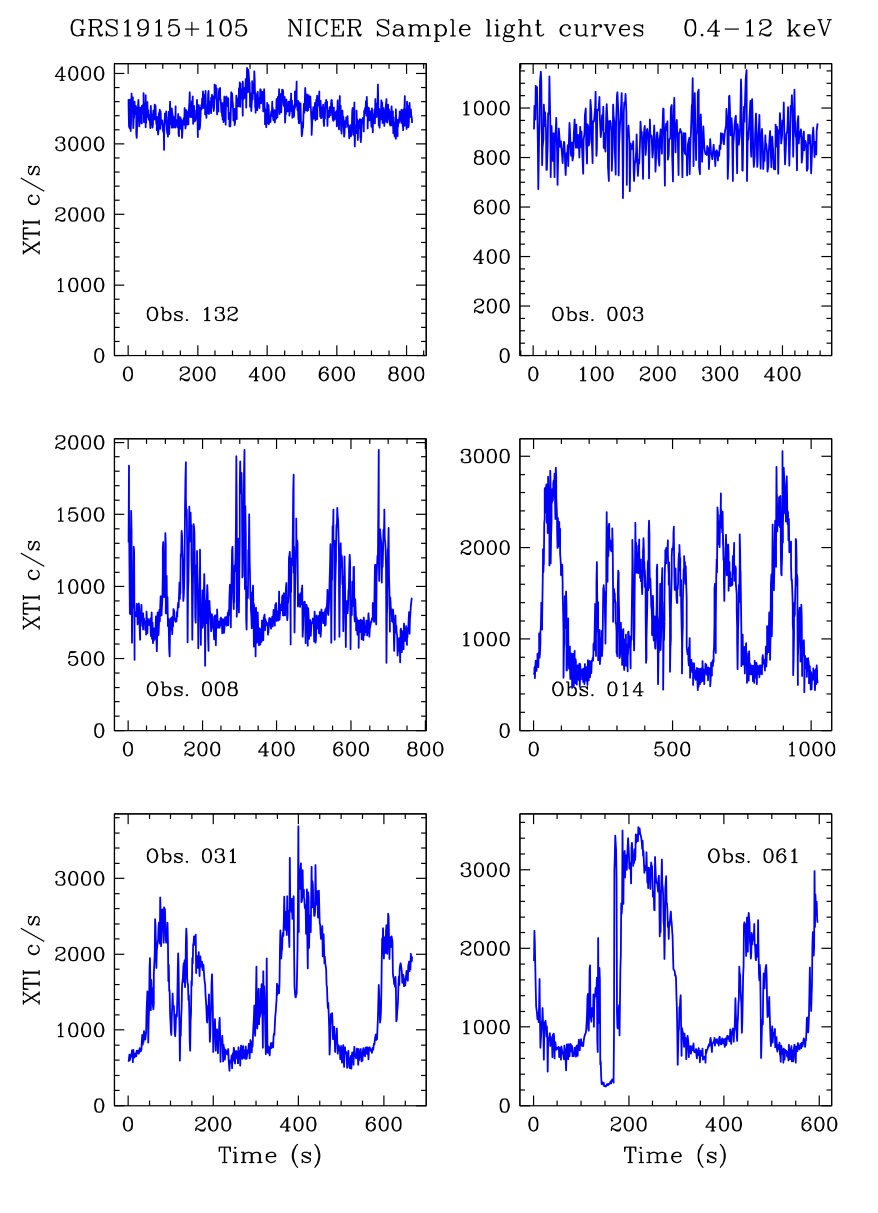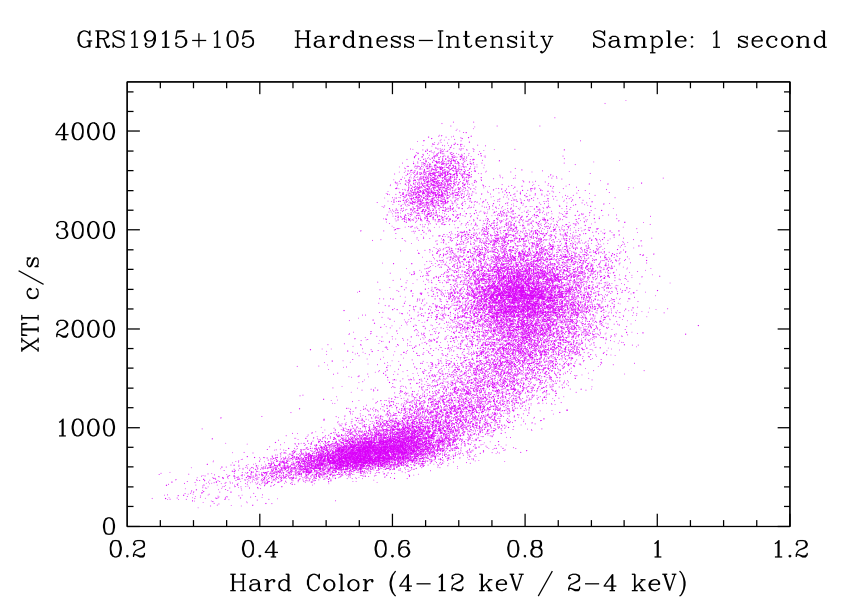NICER / ISS Science Nugget for December 1, 2017
Variability characteristics of black-hole binary GRS 1915+105
The black hole binary, GRS 1915+105, is famous for its X-ray variability. This source first appeared to
astronomers in 1992 as a bright X-ray Nova. Unlike others that erupt for typically a few months to 2
years, this transient source is now in its 25th year of accretion rage.

Figure 1: A sample of NICER light curves from GRS 1915+105 (6 of the 133 accumulated as of this
writing). Each panel showing a second-by-second record of the X-ray brightness. The upper-left panel
shows an interval of modest flickering, which is typical of black hole binaries. Such quasi-steady
behavior is seen in GRS1915 about half of the time. The remaining panels show wild variations, with a
remarkable assortment of variability timescales. The repetitive quality of the variations invites
interpretation as some kind of instability cycle.

Figure 2: A "hardness-intensity diagram" (HID), where every second of all 133 observations
(including those in Fig. 1) are plotted (small purple symbols) in terms of the X-ray intensity (vertical
axis) versus X-ray color (horizontal axis), which is a simple count rate ratio, in two energy bands,
that is a proxy for the spectral shape.
There is an astonishing degree of organization in Figure 2,
compared to Figure 1. GRS 1915 as more of an organized machine than a chaotic monster. The high density
of points in three regions of Figure 2 suggests that the source behavior may be considered as flip-flops
between three quasi-stable states.
NICER is ideally suited to investigate this further,
since the Instrument's energy range provides direct
visibility to both of the spectral components that are changing with time (Fig. 1).
<< Previous
Main Index
Next >>




